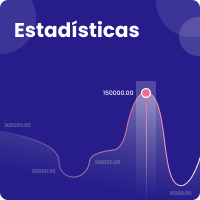Mascarillas faciales: contaminación ambiental, efectos toxicológicos, posibles soluciones y políticas globales
DOI:
https://doi.org/10.26507/paper.2438Palabras clave:
SARS-CoV-2, mascarillas desechables plásticas, máscaras biodegradables, contaminación, ecotoxicologíaResumen
La pandemia por el virus SARS-CoV-2 (COVID-19) declarada por la Organización Mundial de la Salud (OMS) en marzo de 2020, ha afectado gravemente la salud humana y las economías mundiales. Según la OMS, el uso de mascarillas ayuda a controlar la propagación del virus, lo que ha provocado un aumento sin precedentes en la producción y el uso de este elemento de protección personal (EPP). Sin embargo, la eliminación inadecuada y la regulación insuficiente de las mascarillas de plásticos desechables (DPFs) ha intensificado el problema de la contaminación plástica ya existente, debido a que son fabricadas de materiales poliméricos que no se degradan fácilmente y que al ingresar al medio ambiente liberarían microplásticos. Existe una preocupación creciente en torno al destino ambiental de las DPFs que son desechadas irresponsablemente y dispuestas en vertederos que terminan inevitablemente en el curso de ríos y océanos. Recientes estudios informan el aumento de los residuos relacionados con la COVID-19 en algunos entornos, su interacción con la fauna silvestre y la presencia de contaminantes liberados por las DPFs con potencial para inducir efectos ecotoxicológicos. El objetivo de este estudio fue realizar una revisión bibliográfica acerca del impacto ambiental originado por los desechos de las mascarillas faciales debido al aumento de su uso durante la pandemia de la COVID-19, así como también recolectar información preliminar para el tema de la tesis doctoral. Se analizaron artículos científicos en revistas de alto impacto sobre el uso, la eliminación, el manejo de las mascarillas faciales usadas, las implicaciones ambientales originadas por la eliminación inadecuada de este EPP y una revisión de las políticas existentes de plásticos de un solo uso a nivel mundial. Por lo anterior, es necesario encontrar alternativas sostenibles que reduzcan el impacto ambiental causado por las mascarillas plásticas, dentro de las se encuentran; la producción de mascarillas biodegradables a partir de residuos agroindustriales tales como; el plátano, aguacate, cáñamo, maíz, café y caña de azúcar disponibles actualmente y que han sido reportados en estudios; la reutilización plástica mediante trituración y clasificación mediante diferentes técnicas que permiten derretir el plástico en gránulos; la fabricación de mascarillas de tela con filtros desechables; el reciclaje de este EPP mediante pirolisis, la incorporación de máscaras faciales desechables en materiales de construcción y por último, un verdadero cambio hacia las políticas de disposición de plásticos por parte de los líderes políticos a nivel mundial acompañado de la unión de esfuerzos entre la población en general y la tecnología que genere un buen escenario para empezar a resolver la problemática originada por la contaminación plástica en el mundo.
Descargas
Citas
Ammendolia, J., Saturno, J., Brooks, A. L., Jacobs, S., & Jambeck, J. R. (2021). An emerging source of plastic pollution: environmental presence of plastic personal protective equipment (PPE) debris related to COVID-19 in a metropolitan city. Environmental Pollution, Vol. 269, p. 116160.
Aragaw, T. A. (2020). Surgical face masks as a potential source for microplastic pollution in the COVID-19 scenario. Marine Pollution Bulletin, Vol. 159, p. 111517.
Babaahmadi, V., Amid, H., Naeimirad, M., & Ramakrishna, S. (2021). Biodegradable and multifunctional surgical face masks: A brief review on demands during COVID-19 pandemic, recent developments, and future perspectives. Science of the Total Environment, Vol. 798, p. 149233.
Bezerra, J. C., Walker, T. R., Clayton, C. A., & Adam, I. (2021). Single-use plastic bag policies in the Southern African development community. Environmental Challenges, Vol. 3, p. 100029.
Bhagat, J., Zang, L., Nishimura, N., & Shimada, Y. (2020). Zebrafish: An emerging model to study microplastic and nanoplastic toxicity. Science of The Total Environment, Vol. 728, p. 138707.
Bourouiba, L., Dehandschoewercker, E., & Bush, J. W. (2014). Violent expiratory events: on coughing and sneezing. Journal of Fluid Mechanics, Vol. 745, pp. 537-563.
Bouwmeester, H., Hollman, P. C., & Peters, R. J. (2015). Potential health impact of environmentally released micro-and nanoplastics in the human food production chain: experiences from nanotoxicology. Environmental science & technology, Vol. 49, No. 15, pp. 8932-8947.
Cao, Y., Shao, L., Jones, T., Oliveira, M. L., Ge, S., Feng, X., ... & BéruBé, K. (2021). Multiple relationships between aerosol and COVID-19: A framework for global studies. Gondwana Research, Vol. 93, pp. 243-251.
Choi, S., Jeon, H., Jang, M., Kim, H., Shin, G., Koo, J. M., ... & Hwang, S. Y. (2021). Biodegradable, efficient, and breathable multi‐use face mask filter. Advanced Science, Vol. 8, No. 6, p. 2003155.
Chua, M. H., Cheng, W., Goh, S. S., Kong, J., Li, B., Lim, J. Y., ... & Loh, X. J. (2020). Face masks in the new COVID-19 normal: materials, testing, and perspectives. Research, 2020, Vol. 2020.
Das, O., Neisiany, R. E., Capezza, A. J., Hedenqvist, M. S., Försth, M., Xu, Q., ... & Ramakrishna, S. (2020). The need for fully bio-based facemasks to counter coronavirus outbreaks: A perspective. Science of the Total Environment, Vol. 736, p. 139611.
Das, O., Kim, N. K., Hedenqvist, M. S., Bhattacharyya, D., Johansson, E., Xu, Q., & Holder, S. (2020). Naturally-occurring bromophenol to develop fire retardant gluten biopolymers. Journal of Cleaner Production, Vol. 243, p. 118552.
De-la-Torre, G. E., & Aragaw, T. A. (2021). What we need to know about PPE associated with the COVID-19 pandemic in the marine environment. Marine pollution bulletin, Vol. 163, p. 111879.
Diggle, A., & Walker, T. R. (2020). Implementation of harmonized Extended Producer Responsibility strategies to incentivize recovery of single-use plastic packaging waste in Canada. Waste Management, Vol. 110, pp. 20-23.
Essa, W. K., Yasin, S. A., Saeed, I. A., & Ali, G. A. (2021). Nanofiber-based face masks and respirators as COVID-19 protection: A review. Membranes, 2021, Vol. 11, No. 4, p. 250.
Fadare, O. O., & Okoffo, E. D. (2020). Covid-19 face masks: A potential source of microplastic fibers in the environment. The Science of the total environment, Vol. 737, p. 140279
Ha, T. M., & Trinh, V. D. (2021). Green brand equity and COVID-19 post-pandemic: The case of the world’s first coffee face mask in Vietnam. In The Future of Service Post-COVID-19 Pandemic, Volume 2 (pp. 65-86). Springer, Singapore
Hahladakis, J. N., Velis, C. A., Weber, R., Iacovidou, E., & Purnell, P. (2018). An overview of chemical additives present in plastics: Migration, release, fate and environmental impact during their use, disposal and recycling. Journal of hazardous materials, Vol. 344, pp. 179-199.
Hasson, R., Leiman, A., & Visser, M. (2007). The economics of plastic bag legislation in South Africa 1. South African Journal of Economics, Vol. 75, No. 1, p. 66-83.
Huang, J. T., & Huang, V. J. (2007). Evaluation of the efficiency of medical masks and the creation of new medical masks. Journal of international medical research, Vol. 35, No. 2, pp. 213-223.
Ilyas, S., Srivastava, R. R., & Kim, H. (2020). Disinfection technology and strategies for COVID-19 hospital and bio-medical waste management. Science of the Total Environment, Vol. 749, p. 141652.
Jung, S., Lee, S., Dou, X., & Kwon, E. E. (2021). Valorization of disposable COVID-19 mask through the thermo-chemical process. Chemical Engineering Journal, Vol. 405, p. 126658.
Knoblauch, D., & Mederake, L. (2021). Government policies combatting plastic pollution. Current Opinion in Toxicology, Vol. 28, p. 87-96.
Luch A, editor. Molecular, Clinical and Environmental Toxicology [Internet]. Basel: Springer Basel; 2012. (Experientia Supplementum; vol. 101). Available from: http://link.springer.com/10.1007/978-3-7643-8340-4
Ma, J., Chen, F., Xu, H., Jiang, H., Liu, J., Li, P., ... & Pan, K. (2021). Face masks as a source of nanoplastics and microplastics in the environment: quantification, characterization, and potential for bioaccumulation. Environmental Pollution, Vol. 288, p. 117748.
Mani KA. The Lockdown Cleaned the Ganga More Than ‘Namami Gange’ Ever Did [Internet]. 2020. Available from: https://science.thewire.in/environment/ganga-river-lockdown-cleaner-namami-gange-sewage-treatment-ecological-flow/
Mendonça-Gomes, J. M., da Costa Araújo, A. P., da Luz, T. M., Charlie-Silva, I., Braz, H. L. B., Jorge, R. J. B., ... & Malafaia, G. (2021). Environmental impacts of COVID-19 treatment: Toxicological evaluation of azithromycin and hydroxychloroquine in adult zebrafish. Science of The Total Environment, Vol. 790, p. 148129.
Oberoi, G., & Garg, A. (2021). Single-Use Plastics: A Roadmap for Sustainability?. Supremo Amicus, Vol. 24, p. 585.
Pandit, P., Maity, S., Singha, K., Uzun, M., Shekh, M., & Ahmed, S. (2021). Potential biodegradable face mask to counter environmental impact of Covid-19. Cleaner Engineering and Technology, Vol. 4, p. 100218.
Patil, N. A., Gore, P. M., Prakash, N. J., Govindaraj, P., Yadav, R., Verma, V., ... & Kandasubramanian, B. (2021). Needleless electrospun phytochemicals encapsulated nanofibre based 3-ply biodegradable mask for combating COVID-19 pandemic. Chemical Engineering Journal, Vol. 416, p. 129152.
Pellett, P. E., Mitra, S., & Holland, T. C. (2014). Basics of virology. Handbook of clinical neurology, Vol. 123, pp. 45-66.
Purwar, R., Sai Goutham, K., & Srivastava, C. M. (2016). Electrospun Sericin/PVA/Clay nanofibrous mats for antimicrobial air filtration mask. Fibers and Polymers, Vol. 17, No 8, pp. 1206-1216.
Rodríguez-Urrego, D., & Rodríguez-Urrego, L. (2020). Air quality during the COVID-19: PM2. 5 analysis in the 50 most polluted capital cities in the world. Environmental Pollution, Vol. 266, p. 115042.
S. A. G. E. S. (2020). N95 Mask Re-Use Strategies. Society of American Gastrointestinal and Endoscopic Surgeons. Consultado el 20 de agosto de 2021 en https://www.sages.org/n-95-re-use-instructions.
Saraswat, R., & Saraswat, D. A. (2020). Research opportunities in pandemic lockdown. Science, Vol. 368, No. 6491, pp. 594-595.
Selvaranjan, K., Navaratnam, S., Rajeev, P., & Ravintherakumaran, N. (2021). Environmental challenges induced by extensive use of face masks during COVID-19: A review and potential solutions. Environmental Challenges, Vol. 3, p. 100039.
Sharma, S., Zhang, M., Gao, J., Zhang, H., & Kota, S. H. (2020). Effect of restricted emissions during COVID-19 on air quality in India. Science of the Total Environment, Vol. 728, p. 138878.
Shekaraiah, S., & Suresh, K. (2021). Effect of Face Mask on Voice Production During COVID-19 Pandemic: A Systematic Review. Journal of Voice.
Shen, M., Zeng, Z., Song, B., Yi, H., Hu, T., Zhang, Y., ... & Xiao, R. (2021). Neglected microplastics pollution in global COVID-19: disposable surgical masks. Science of the Total Environment, Vol. 790, p. 148130.
Shrestha, A. M., Shrestha, U. B., Sharma, R., Bhattarai, S., Tran, H. N. T., & Rupakheti, M. (2020). Lockdown caused by COVID-19 pandemic reduces air pollution in cities worldwide.
Silva, A. L. P., Prata, J. C., Walker, T. R., Duarte, A. C., Ouyang, W., Barcelò, D., & Rocha-Santos, T. (2021). Increased plastic pollution due to COVID-19 pandemic: Challenges and recommendations. Chemical Engineering Journal, Vol. 405, p. 126683
Silva, A. L. P., Prata, J. C., Walker, T. R., Campos, D., Duarte, A. C., Soares, A. M., ... & Rocha-Santos, T. (2020). Rethinking and optimising plastic waste management under COVID-19 pandemic: policy solutions based on redesign and reduction of single-use plastics and personal protective equipment. Science of the Total Environment, Vol. 742, p. 140565.
Sivadas, S. K., Mishra, P., Kaviarasan, T., Sambandam, M., Dhineka, K., Murthy, M. R., ... & Hoehn, D. (2022). Litter and plastic monitoring in the Indian marine environment: A review of current research, policies, waste management, and a roadmap for multidisciplinary action. Marine Pollution Bulletin, Vol. 176, p. 113424.
Sullivan, G. L., Delgado-Gallardo, J., Watson, T. M., & Sarp, S. (2021). An investigation into the leaching of micro and nano particles and chemical pollutants from disposable face masks-linked to the COVID-19 pandemic. Water Research, Vol. 196, p. 117033.
Sungur, Ş., & Gülmez, F. (2015). Determination of metal contents of various fibers used in textile industry by MP-AES. Journal of Spectroscopy, Vol. 2015.
Vanapalli, K. R., Sharma, H. B., Ranjan, V. P., Samal, B., Bhattacharya, J., Dubey, B. K., & Goel, S. (2021). Challenges and strategies for effective plastic waste management during and post COVID-19 pandemic. Science of The Total Environment, Vol. 750, p. 141514.
Wang, L., Gao, Y., Xiong, J., Shao, W., Cui, C., Sun, N., ... & He, J. (2022). Biodegradable and high-performance multiscale structured nanofiber membrane as mask filter media via poly (lactic acid) electrospinning. Journal of Colloid and Interface Science, Vol. 606, pp. 961-970.
Wibisono, Y., Fadila, C. R., Saiful, S., & Bilad, M. R. (2020). Facile approaches of polymeric face masks reuse and reinforcements for micro-aerosol droplets and viruses filtration: A review. Polymers, Vol. 12, No. 11, p. 2516.
Williams-Wynn, M. D., & Naidoo, P. (2020). A review of the treatment options for marine plastic waste in South Africa. Marine Pollution Bulletin, Vol. 161, p. 111785.
Wu, C. L., Zhang, M. Q., Rong, M. Z., & Friedrich, K. (2005). Silica nanoparticles filled polypropylene: effects of particle surface treatment, matrix ductility and particle species on mechanical performance of the composites. Composites science and technology, Vol. 65, No. 3-4, pp. 635-645.
Zambrano-Monserrate, M. A., Ruano, M. A., & Sánchez-Alcalde, L. (2020). Indirect effects of COVID-19 on the environment. Science of the total environment, Vol. 728, p. 138813.
Descargas
Publicado
Cómo citar
Evento
Sección
Licencia
Derechos de autor 2022 Asociación Colombiana de Facultades de Ingeniería - ACOFI

Esta obra está bajo una licencia internacional Creative Commons Atribución-NoComercial-SinDerivadas 4.0.
| Estadísticas de artículo | |
|---|---|
| Vistas de resúmenes | |
| Vistas de PDF | |
| Descargas de PDF | |
| Vistas de HTML | |
| Otras vistas | |








